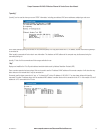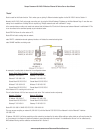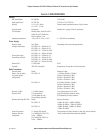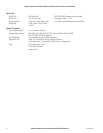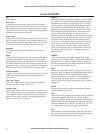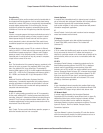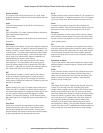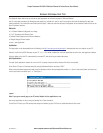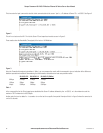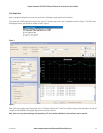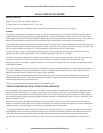www.cooperbussmann.com/BussmannWirelessResources
83
Cooper Bussmann BU-245U-E Wireless Ethernet & Device Server User Manual
TCP/IP
The underlying technology behind the Internet and communications
between computers in a network. The first part, TCP, is the transport
part, which matches the size of the messages on either end and
guarantees that the correct message has been received. The IP part is
the user's computer address on a network. Every computer in a
TCP/IP network has its own IP address that is either dynamically
assigned at startup or permanently assigned. All TCP/IP messages
contain the address of the destination network as well as the address
of the destination station. This enables TCP/IP messages to be
transmitted to multiple networks (subnets) within an organization or
worldwide.
VoIP
Voice Over Internet Protocol. Voice transmission using Internet Protocol
to create digital packets distributed over the Internet. VoIP can be less
expensive than voice transmission using standard analog packets over
POTS (Plain Old Telephone Service).
VPN
Virtual Private Network. A type of technology designed to increase the
security of information transferred over the Internet. VPN can work
with either wired or wireless networks, as well as with dial-up
connections over POTS. VPN creates a private encrypted tunnel from
the end user's computer, through the local wireless network, through
the Internet, all the way to the corporate servers and database.
WAN
Wide Area Network. A communication system of connecting PCs and
other computing devices across a large local, regional, national or
international geographic area. Also used to distinguish between
phone-based data networks and Wi-Fi. Phone networks are
considered WANs and Wi-Fi networks are considered Wireless Local
Area Networks (WLANs).
WEP
Wired Equivalent Privacy. Basic wireless security provided by Wi-Fi. In
some instances, WEP may be all a home or small-business user
needs to protect wireless data. WEP is available in 40-bit (also called
64-bit), or in 108-bit (also called 128-bit) encryption modes.
As 108-bit encryption provides a longer algorithm that takes longer to
decode, it can provide better security than basic 40-bit (64-bit)
encryption.
Wi-Fi
Wireless Fidelity: An interoperability certification for wireless local area
network (LAN) products based on the Institute of Electrical and
Electronics Engineers (IEEE) 802.11 standard.
3A1576Rev1.6



